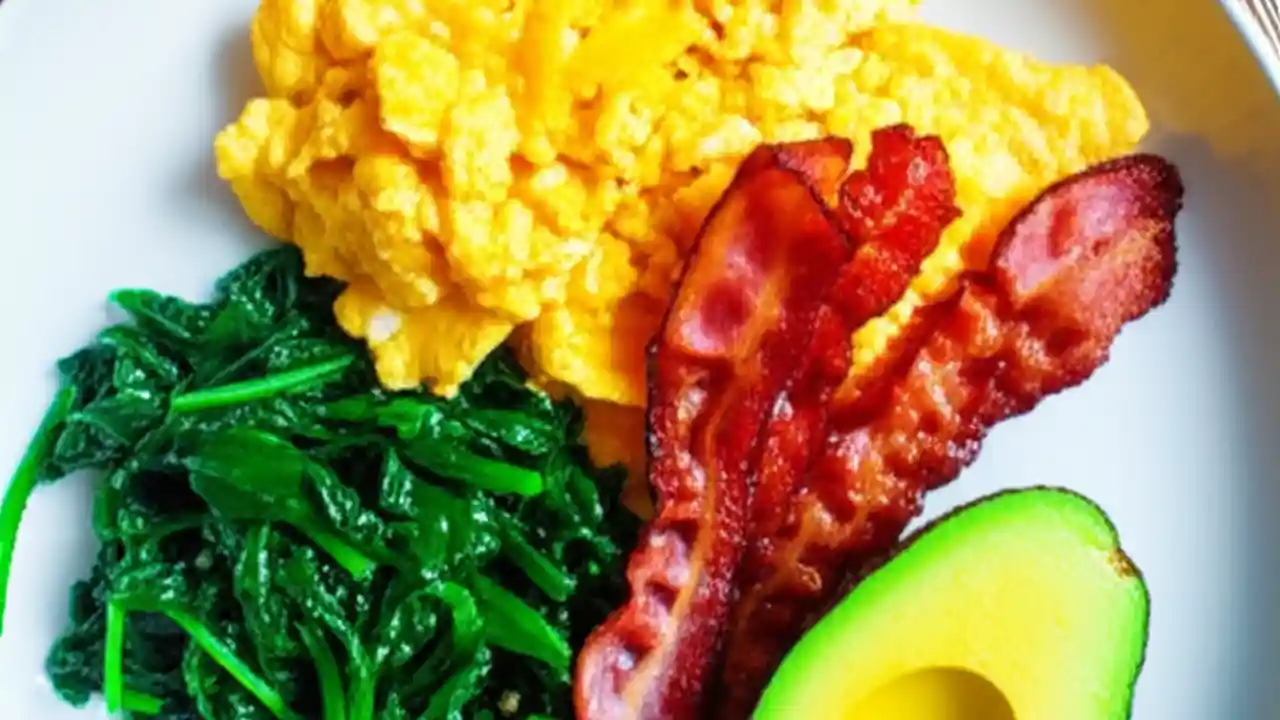Starting with woodworking is all about choosing a simple, achievable first project, gathering a few essential hand tools, and prioritizing safety above all else. Your first creation should be something small and useful, like a handmade cutting board or a simple box, which will teach you fundamental skills like measuring, cutting, and finishing without overwhelming you.
For twenty years, I’ve seen countless people get hooked on the incredible satisfaction of turning a plain piece of wood into something beautiful and functional. It’s a journey that builds confidence with every cut and joint. This guide is the conversation I wish I’d had when I first stood in my garage, staring at a pile of lumber, wondering where to even begin.
We’ll walk through everything you need to know, from picking those perfect woodworking projects for beginners to selecting the essential woodworking tools that offer the most bang for your buck. We’ll demystify wood types, cover the non-negotiable safety rules, and give you a clear, step-by-step plan to get you making sawdust and smiling this weekend.
Table of Contents
Getting Started: Your First Steps into Woodworking
The biggest hurdle in woodworking isn’t skill; it’s inertia. It’s the feeling of being overwhelmed by options, tools, and terminology. Let’s break down those initial barriers so you can get to the fun part.
What is the easiest woodworking project to start with?
The easiest project is one that requires minimal tools and focuses on the most basic skills: measuring, cutting, and sanding. A simple, one-board cutting board is a classic for a reason. You learn to make straight cuts, sand to a smooth finish, and apply a food-safe oil. It’s a low-cost, high-reward project you can use in your kitchen the same day.
Other fantastic first projects include:
- A simple wooden box or crate
- A set of coasters
- A smartphone stand
- A small floating shelf
The key is to pick something that excites you but can be completed in a weekend. Success on your first project is the best motivation for your second.
How much does it cost to start woodworking?
This is the “how long is a piece of string” question, but I can give you a realistic breakdown. You don’t need a shop full of expensive machines. You can get started for the price of a nice dinner out.
Here’s a realistic budget for a beginner focusing on hand tools:
| Item Category | Estimated Cost (USD) | Notes |
|---|---|---|
| Essential Hand Tools | $100 – $200 | This covers a quality saw, square, measuring tape, and clamps. Don’t cheap out on your measuring tools. |
| Safety Gear | $30 – $50 | Non-negotiable. Safety glasses, dust mask, and hearing protection. |
| Wood & Consumables | $20 – $40 | A few boards of pine or poplar, sandpaper, wood glue, and a finish like mineral oil. |
| Total Estimated Start-up | $150 – $290 | A solid, one-time investment to get you started on multiple projects. |
You can absolutely spend more, especially on power tools, but this is a genuine, all-you-need-to-start figure. I started with less and added tools as I earned them with small projects I sold.
Do I need a dedicated workshop or can I do woodworking in an apartment?
You absolutely do not need a dedicated, two-car garage workshop. For years, my “workshop” was a corner of my apartment balcony. The key is adapting to your space.
If you’re in an apartment or small space:
- Focus on hand tools: They are quieter, create less pervasive dust, and are much more portable.
- Work on a sturdy table or workbench: A portable workbench like a Workmate is a fantastic investment.
- Dust control is key: Lay down a tarp for easy cleanup. A shop vacuum is your best friend. Work near a window with a fan for ventilation.
- Consider project size: Start with smaller projects that don’t require large pieces of lumber.
Many incredible woodworkers create masterpieces in tiny spaces. It’s about being smart and considerate, not about having a huge shop.
The Beginner’s Toolkit: Essential Tools vs. The Hype
Walking into a tool aisle is intimidating. There are hundreds of tools, and they all look important. The truth is, you only need a handful to build amazing things. The secret is to buy quality, not quantity.
What are the absolute essential tools for a beginner woodworker?
If I had to start over from scratch tomorrow with just the bare essentials, this is what I would buy. This list is built around hand tools because they teach you the fundamentals of how wood behaves.
- A Quality Combination Square: This is more than a ruler. It’s your primary tool for marking 90 and 45-degree angles, checking for square, and measuring depth. A good 12-inch one will be your most-used tool.
- A Japanese Pull Saw (Ryoba): These saws cut on the pull stroke, giving you more control and a cleaner, thinner cut. A Ryoba has teeth on both sides (one for ripping, one for cross-cutting), making it incredibly versatile.
- A Set of Clamps: You can never have enough clamps. Start with at least two 12-inch F-style clamps or bar clamps. They are your third hand, holding pieces steady while you cut or glue them together.
- A Measuring Tape: Get a sturdy 16-foot or 25-foot tape measure. Look for one with clear, easy-to-read markings.
- A Block Plane: This small plane is perfect for trimming edges, chamfering corners, and fitting joints. Learning to use a plane is a true woodworking joy.
- Wood Glue and Sandpaper: A good PVA wood glue (like Titebond I or II) is essential. Get a variety pack of sandpaper grits, from 80-grit (for rough shaping) to 220-grit (for a smooth finish).
That’s it. With this small kit, you can build an astonishing number of projects.
Should I buy hand tools or power tools first?
I am a firm believer in starting with hand tools. Power tools are fast and efficient, but they can be dangerous and they mask mistakes. Hand tools force you to be precise and to understand the grain of the wood.
Think of it like learning to cook. You learn knife skills before you master a food processor. The skills you learn with a hand saw—how to follow a line, how to control the blade—translate directly to when you eventually use a miter saw or table saw.
Here’s a quick comparison to help you decide:
| Factor | Hand Tools | Power Tools |
|---|---|---|
| Learning Curve | Steeper initially, but builds deep fundamental skills. | Easier to get a “good enough” result quickly, but harder to master. |
| Cost | Lower initial investment. | Significantly higher initial investment. |
| Safety | Safer. Injuries are less severe and less common. | Higher risk. Require strict adherence to safety protocols. |
| Noise & Dust | Quiet, minimal dust (shavings, not fine powder). Apartment-friendly. | Very loud, creates massive amounts of fine dust. Requires a larger space. |
| Experience | Quiet, meditative, and physically engaging. You feel the wood. | Loud, fast, and focused on production efficiency. |
My advice? Master the hand tools first. Then, the first power tool you should consider is a quality cordless drill/driver, followed by a random orbit sander. They will save you a lot of time and effort.
Understanding Your Material: A Simple Guide to Wood
Wood is your canvas. Understanding its basic properties will make you a better woodworker and help you avoid frustration. You don’t need to be a botanist, just learn a few key distinctions.
What’s the best type of wood for beginners?
The best wood for a beginner is affordable, easy to work with, and readily available. You don’t want to practice on an expensive, exotic hardwood. Your best bets are:
- Pine: As a softwood, it’s very easy to cut and shape. It’s also the cheapest wood you’ll find at any big box store. The downside is that it dents and scratches easily. Perfect for practicing techniques.
- Poplar: This is one of my favorite “beginner” hardwoods. It’s relatively inexpensive, easy to work with, and has a fine, uniform grain. It doesn’t have a dramatic look, which makes it the perfect wood if you plan to paint your project.
- Maple (Soft): A step up in hardness and cost, but still very workable. It has a beautiful, light color and finishes wonderfully, making it great for projects like cutting boards.
Avoid woods like Red Oak for your first few projects. While beautiful, it’s very hard and its open grain can be prone to tear-out, which can be frustrating for a beginner.
What is the difference between hardwood and softwood?
This is a common point of confusion. The name has nothing to do with how hard or soft the wood actually is. The distinction is botanical.
- Softwoods come from coniferous trees (trees with needles and cones), like Pine, Fir, and Cedar. They tend to grow faster, making them generally less expensive.
- Hardwoods come from deciduous trees (trees that lose their leaves), like Oak, Maple, and Walnut. They grow slower, making them denser and typically more expensive.
As a beginner, you’ll likely start with a softwood like pine for practice, then move to an affordable hardwood like poplar for your “real” projects.
Safety First, Always: The Unskippable Rules
This is the most important section in this guide. Woodworking is an incredibly safe and rewarding hobby if you respect the tools and the process. Complacency is the enemy. These are not suggestions; they are rules.
What kind of safety gear do I need?
Before you make a single cut, you must have and use the proper Personal Protective Equipment (PPE). There are no exceptions.
- Safety Glasses: Not sunglasses. You need ANSI Z87+ rated safety glasses that provide side protection. A wood chip or splinter in the eye is a catastrophic, preventable injury. Wear them from the moment you enter your workspace until the moment you leave.
- Dust Mask or Respirator: Fine wood dust is a carcinogen. For simple hand sanding, a disposable N95 mask is okay. For power sanding or sawing, a reusable respirator with P100 cartridges is a much better investment in your long-term health.
- Hearing Protection: This is more for power tool users, but it’s a good habit. Power saws, routers, and even shop vacuums operate at levels that cause permanent hearing damage over time. Use earplugs or earmuffs.
Never wear loose clothing, gloves (they can get caught in spinning blades), or jewelry in the shop. Tie back long hair. Be present and focused—never work when you are tired, rushed, or distracted.
Your First Projects: From Simple to Stunning
Okay, theory is over. It’s time to build something! Here are a few project ideas, starting with the absolute easiest and moving up slightly in complexity.
Project 1: The Classic Cutting Board
This is the perfect first project. It teaches you measuring, cutting to a line, sanding, and applying a finish. All you need is one board.
- Wood: One piece of 1×6 maple or poplar, about 2 feet long.
- Tools: Saw, combination square, pencil, sandpaper, clamps.
- Steps:
- Mark a straight line across the board to your desired length (e.g., 12 inches).
- Securely clamp the board to your work surface.
- Carefully cut along the line with your pull saw. Take your time.
- Sand all faces and edges. Start with 120-grit, then move to 220-grit for a silky-smooth finish.
- (Optional) Drill a hole in the corner for hanging.
- Wipe off all the dust and apply a generous coat of food-safe mineral oil. Let it soak in, then wipe off the excess.
Project 2: A Simple Bookshelf or Display Shelf
This project introduces a new skill: assembly. You’ll make a few simple butt joints with glue and nails or screws.
- Wood: One piece of 1×8 pine, 6 feet long.
- Tools: The cutting board kit, plus a drill/driver and wood glue.
- Concept: Cut the board into three pieces: two sides (e.g., 12 inches each) and one top/bottom (e.g., 24 inches). You’ll assemble them into a ‘U’ or ‘C’ shape.
- Key Skill: Learn to apply glue evenly, clamp the pieces together so they are square, and then secure them with screws or nails.
Mastering the Basics: Core Skills to Practice
Projects are just a way to practice skills. Focus on mastering these three things, and you’ll be able to build anything you can imagine.
How do I make a straight cut with a hand saw?
This is the foundational skill. My first cuts looked like a wandering snake. Here’s the trick I learned:
- Mark a Crisp Line: Use your combination square and a sharp pencil or marking knife to create a clear line all the way around the board.
- Start the Cut: Use your thumb knuckle as a guide for the saw blade. Make a few gentle pull strokes to create a small kerf (the groove the saw makes).
- Use Your Whole Arm: Don’t just use your wrist. Lock your wrist and elbow and saw from your shoulder. It’s a smoother, more controlled motion.
- Watch the Line, Not the Saw: Your eyes should be focused on the line you’re cutting to, not the saw blade itself. Your hand will naturally follow your eye.
- Let the Saw Do the Work: Don’t force it. A sharp saw wants to cut. Apply light, steady pressure.
Practice on scrap wood. Your first ten cuts will be rough. Your hundredth cut will be perfect.
How do I join two pieces of wood together?
For a beginner, the strongest and easiest joint is simply glue and a mechanical fastener (like a nail or screw). This is called a butt joint.
The secret to a strong glue joint is clamping pressure. Wood glue works by wicking into the wood fibers of both pieces. When you clamp them tightly together, these fibers intermingle and the glue creates a bond that is literally stronger than the wood itself. Always apply a thin, even layer of glue to both surfaces, clamp them securely, and wipe away any excess “squeeze-out” with a damp rag before it dries.
What’s a good finish for a beginner project?
The finish can make or break a project. For a beginner, you want something that is easy to apply and hard to mess up. Forget about complex varnishes or lacquers for now.
Your best options are wipe-on finishes:
- Food-Safe Mineral Oil: The go-to for cutting boards and kitchen items. It’s cheap, non-toxic, and easy to apply. Just pour it on and wipe it off. It needs to be reapplied periodically.
- Wipe-On Polyurethane: This provides more protection than oil. It’s just thinned-down polyurethane that you apply with a rag. It’s very forgiving and gives a durable, protective coat.
- Hardwax Oil (like Rubio Monocoat or Osmo): These are a bit more expensive but are my absolute favorite. They are incredibly easy to apply (wipe on, wipe off), durable, and give the wood a beautiful, natural feel. They are also very easy to repair if they get scratched.
Always test your finish on a piece of scrap wood from your project first to see how it will look.
Conclusion
You now have the complete roadmap to start your woodworking journey. It’s not about buying every tool or knowing every joint; it’s about starting simply, focusing on fundamental skills, and embracing the joy of the process. Pick that first project, gather your essential tools, and remember that safety is the most important skill you can learn. The satisfaction of using something you built with your own two hands is unlike anything else.
If this guide helped you take that first step, share it with someone else who’s ready to start their own creative journey. Now, go make some sawdust.












